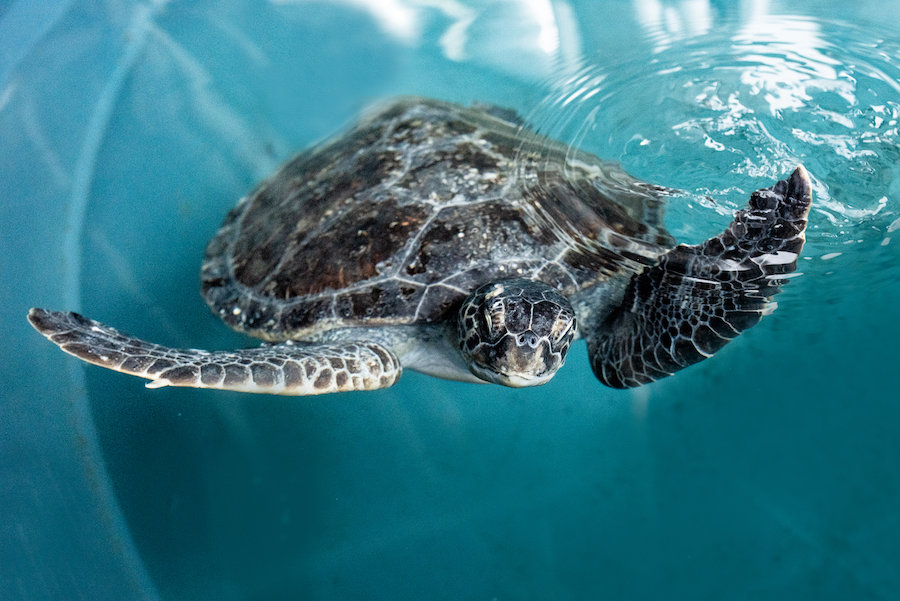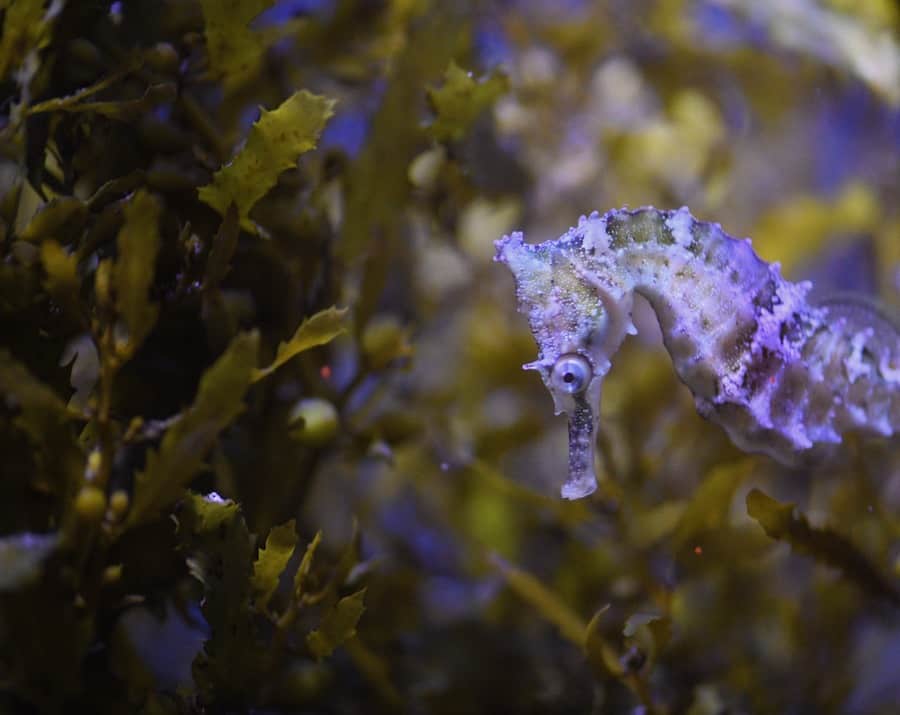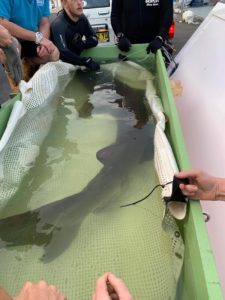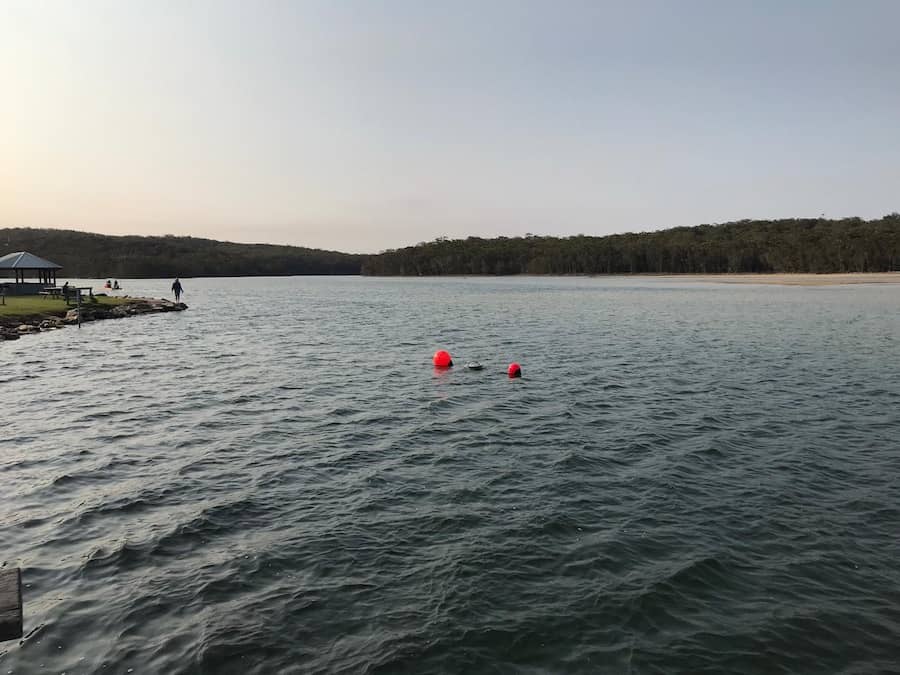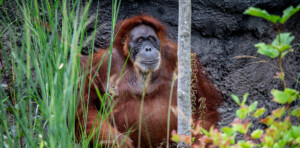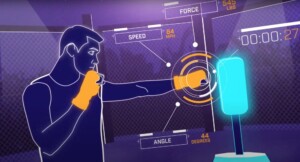When he spoke to Blooloop earlier this year he was preparing for an exciting rescue mission: “SEA LIFE Sydney Aquarium is just in the middle of preparing for a shark rescue tomorrow,” he said.
“There’s a grey nurse shark out in the wild in a place called Bushrangers Bay. It has three hooks stuck in its face; one just underneath its eye joined to another one that then joins to its mouth.
“We’ve got a special dispensation license to take it up to the surface, put it on a boat, and cut these hooks out. It’s been planned for a while, and hopefully, it’s all going to happen tomorrow.”
The rescue was, in the event, successfully carried out, and since Brown talked to us worldwide events have taken a turn, thanks to the coronavirus outbreak. Like attractions across Australia, the aquarium was forced to close its doors due to the pandemic. However, it was able to reopen its doors on 1 June. Team members have also been continuing with animal care and conservation projects during the lockdown.
Chris Brown and SEA LIFE Sydney Aquarium
Brown’s interest in ocean conservation dates back to three years spent in Cyprus during his childhood, where he became fascinated by life under the sea.
“I just used to spend the whole time at the beach, holding my breath, going under the water, picking up stuff from deep down,” he said.
“I got really excited about all animals but particularly things under the sea, and especially sharks. From then on I did everything towards working with sharks in the future. I did a marine biology zoology degree, and ended up finishing on a zoology degree at the University of Liverpool.”
On graduating from university, he contacted numerous aquariums around the country.
“Great Yarmouth SEA LIFE Aquarium got back to me. I went for an interview and met a rescue turtle called Antiope in the quarantine area, and that was it: I was hooked.”
He began there as a part-time aquarist, and worked his way up via different SEA LIFE centres, filling roles that took him around the world, before ending up in Sydney.
Trying new projects
Previously, he had been working across Europe, supporting the 35 SEA LIFE centres there from a curatorial perspective.
“I applied for a secondment here, and was very lucky Merlin and SEA LIFE allowed me to come over here for two years. The plan was to come here and try out various projects, see how successful they were and which ones worked, which ones didn’t, and then take some of the learnings back to Europe.”
When he first arrived at SEA LIFE Sydney, one of the large main exhibits was being set up:
“The new exhibit – a big attraction around the Barrier Reef – was literally been filled with water as I got here. It was really exciting to be part of that because my eldest two children, who are nine and 11 years old, were just the right age to help me.”
“On the first night of us opening this exhibit, we moved one of our rescue turtles into it: she’d been in captivity a long time. She has a slight problem with swimming because she had been damaged by a boat a long time ago.
“One of the things we have to do when we move animals into a new exhibit like that is to spend 24 hours viewing them to check they don’t have any issues in there, and that they settle in. So I got to spend the night with the girls in the aquarium.”
What makes SEA LIFE Syndey different?
Commenting on what makes the Sydney aquarium different, Brown said:
“One of the things that really attracts me about SEA LIFE Sydney is its size and complexity. It has three big ocean exhibits, and a huge array of animals, including a rescued dugong, which is one of only three in captivity across the world in any aquarium. It’s amazing to work with that guy. It’s. He’s called Pig, and he’s a real character.”
View this post on Instagram
“There are three different species of penguin, there are sawfish, and more than 13 species of shark, including the iconic grey nurse shark. We’ve got some really important and endangered animals, and are trying to tell a story about them.
“There is also an amazing team here with huge expertise. I wanted to come and learn some of this stuff, too. I’m really excited to be here.”
Conservation projects
Brown is working on a range of conservation projects at SEA LIFE Sydney.
“When I got here, we couldn’t do any rescues from here as a site, although I have some people here on the team who are incredibly good at doing animal rescues. The first part of my role, therefore, was to help set up licenses to enable us to go and help species in the wild and, at the same time, set up a rescue rehab area. We did that last year, and got our first set of licences through.”
The first license, from the DPI [or Department of Primary Industries, a division of the New South Wales Government], was for rescuing turtles.
“The first turtle – Matilda – came in. She was a beautiful green turtle, quite young. When she was found she was just floating, unable to dive under the water. We brought her in here, and after about two weeks of giving her a lot of care, she suddenly passed a load of litter; sweet wrappers tangled up with a lot of fishing line.
“Those bits of rubbish had been clogging her up, which meant she couldn’t eat properly. She got so weak she wasn’t able to dive. Once she passed that and we were able to feed her up, we got to go and take our very first rescue animal out. We released her from our boat here off Sydney Harbour. That was one of the nicest parts of the job.”
Dealing with ocean litter
The turtle rescue spurred on several further projects.
“We arranged to go out with a really good company called Sydney by Kayak,” said Brown. “With them, you paddle around Darling Harbour in a kayak, at a place called Lavender Bay, collecting the rubbish that is floating there.
“We had a couple of days doing that with the staff. They started working with SEA LIFE Sydney Aquarium and the SEA LIFE Trust. They raised money through corporate days where businesses paid to come in and help pick up that litter. Then we set up a fund together, and we were able to install a Seabin.”
A Seabin is a floating garbage unit that skims the surface of the water, intercepting floating debris, including macro and microplastics and, with an additional filter, microfibres.
“I’ve got it just outside my office here; we’re just above the water, so I can see straight down into Darling Harbor. Anything that is on the surface of the water, any plastic or litter, is sucked in and kept in a kind of filter bag, which we empty. It’s nice to see it working all day; it’s very busy, actually.”
Future challenges
Projects like this keep Brown optimistic about the future, despite the magnitude of the challenges facing the oceans. He says:
“It certainly feels as if the problems are overwhelming, sometimes. But I wouldn’t do this role if I wasn’t enthusiastic that people can make a difference, and that it is worth being passionate about the animals. The biggest barrier is just getting people to understand what’s out there. And that’s the beauty of aquariums: that you can actually show people, and share that passion and excitement.”
I wouldn’t do this role if I wasn’t enthusiastic that people can make a difference, and that it is worth being passionate about the animals
“There are a lot of negatives, but all we can do is work on individual projects that are making a difference in the world. That’s what I try and do”
Sydney seahorses
Another conservation project involves the White’s seahorse, also known as the Sydney seahorse.
“When we first got here, we were talking to the DPI who we got the turtle rescue license from, and they’d just classified that seahorse as an endangered species here in New South Wales. They suggested we set up a project together, so that is what we have done.
“On the beaches here, we sometimes have these small shark net enclosed areas where people swim. The seahorses are using that as a kind of environment to hold onto. But this particular seahorse is doing quite badly at the moment, particularly around Sydney.”
“So, SEA LIFE Sydney brought some pairs of seahorses into the aquarium last October and allowed them to breed here. We have been raising the babies ever since. The idea is that in the spring when they are old enough to tag, we’re then going to take them back out into the wild. We will release these babies into areas where we’re not finding them.
“We worked on this with David Harasti [Dr David Harasti, Senior Marine Scientist with DPI Fisheries and UTS Alumni] who does the tagging. It’s in combination with another project they’ve got: the Seahorse Hotels.”
Creating a new habitat
One of the issues with the seahorses is that in Sydney Harbor they don’t have enough habitats where they can hold on and obtain food.
“David Harasti, came up with the idea of a ‘seahorse hotel’, essentially a mesh cage. We made them here at SEA LIFE Sydney ourselves, as well.”
The idea is to create a new kind of habitat. The ‘hotels’ are put out into the Harbour for a couple of months until they become fouled with weed and environment for the seahorses’ food to live on. Then the seahorses are released into that area.
“Again, you need a license to be able to do that. We installed the first one of those on February the 20th this year. We’ll leave it out for a few months, and then that’s where we put our seahorses.”
SEA LIFE Sydney and shark conservation
Another, perhaps more dramatic, project concerns a shark:
“There is a team here at SEA LIFE Sydney with a lot of experience and expertise in working with grey nurse sharks,” said Brown. “The grey nurse shark is considered critically endangered on this side of Australia, this close to the Eastern coast. We’ve got a license to be able to rescue these animals. That is what I’m going to go and do tomorrow.”
“The first one that we worked on was just before Christmas [2019] in a place called Lake Conjola, probably about three hours down south from here: a seawater lake, right next to the sea. Every 18 months, the local council opens up the lake. The seawater floods it, and then it naturally closes off by itself.”
Rehoming sharks
“The last time they did that, two big grey nurse sharks came into the lake,” said Brown. “People started seeing them, and then one was found dead, and rather underweight. The DPI asked if we could support them with moving or re-homing the one that was still in the lake. We spent some time planning it, and then the plan kicked off just at the end of December.
“We went down to Lake Conjola with the DPI. They brought in a specialist drumliner who put a drum line out and caught the shark literally within a few minutes. One of the guys here had designed a shark transport tank, which we had set up on the trailer. We brought the shark back over by boat and put it into the transport tank. Then we drove it 20 or 30 minutes down the coast to Ulladulla, just down the coast from there.”
“We moved it again onto a big boat, took it out into the harbour and were able to release it back into the wild. That was a lovely project to work on.”
Connecting with the community
Brown has been working with the staff at SEA LIFE Sydney Aquarium to explore engagement, training and development towards reaching beyond the aquarium, and into the wider community.
“It’s about finding ways being more than just an aquarium; being part of the community. A major role for aquariums, and zoos as well, is establishing that connection with animals. When people form a connection, they want to find out more. They develop an interest in the welfare of those animals, here and in the wild. I think that is incredibly important.”
There has, he says, been a shift in the public’s expectation away from wanting to be entertained, and towards wanting to be involved in conservation:
“It is just amazing to see how much interest there is from the public in what you’re doing with the animals and how they can help them in the wild. It’s a genuine development of interest. It’s pretty cool.”


